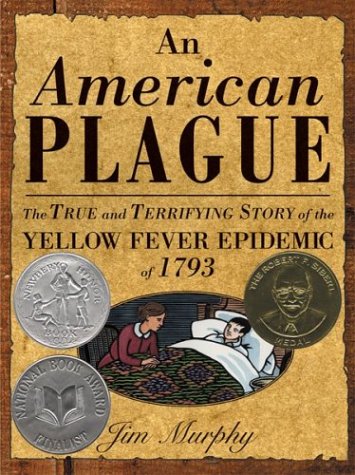
If a deadly and contagious sickness struck your city, and the wealthier classes began to evacuate, would you stay, and help your fellow citizens? Or would you leave with your family and head for safety? Appropriately subtitled The True and Terrifying Story of the Yellow Fever Epidemic of 1793, the story begins one hot summer in Philadelphia when all were faced with this question. This non-fiction title does not have a cover that draws the viewer in, nor does it have an opening line that grabs you by your neck and forces you to keep reading. But if you can start on Chapter 2, with its grisly death scene, or pitch students a story about a plague that attacked the United States before it extended beyond its current eastern coast, the reader will be richly rewarded with a harrowing story of death and perseverance, racism and heroism, politics and a glimpse at life in the U.S. just after its revolution. George Washington and the Free African Society are major players in this 139 page title which is followed by sources and an index. Pair it with Anderson’s Fever 1793 (click here for scholastic's lesson plans to teach it), or assign it as supplemental reading to students studying 16th century American History. An interesting point of contrast with contemporary literary responses to the AIDS crisis, this just might interest future public health advocates and policy makers in their course of study.
Murphy, Jim. An American Plague: The True and Terrifying Story of the Yellow Fever Epidemic of 1793. New York: Clarion Books, 2003.



No comments:
Post a Comment